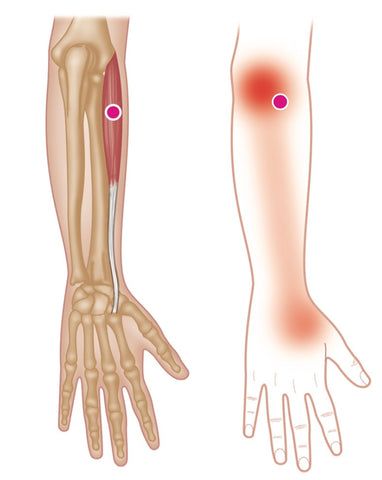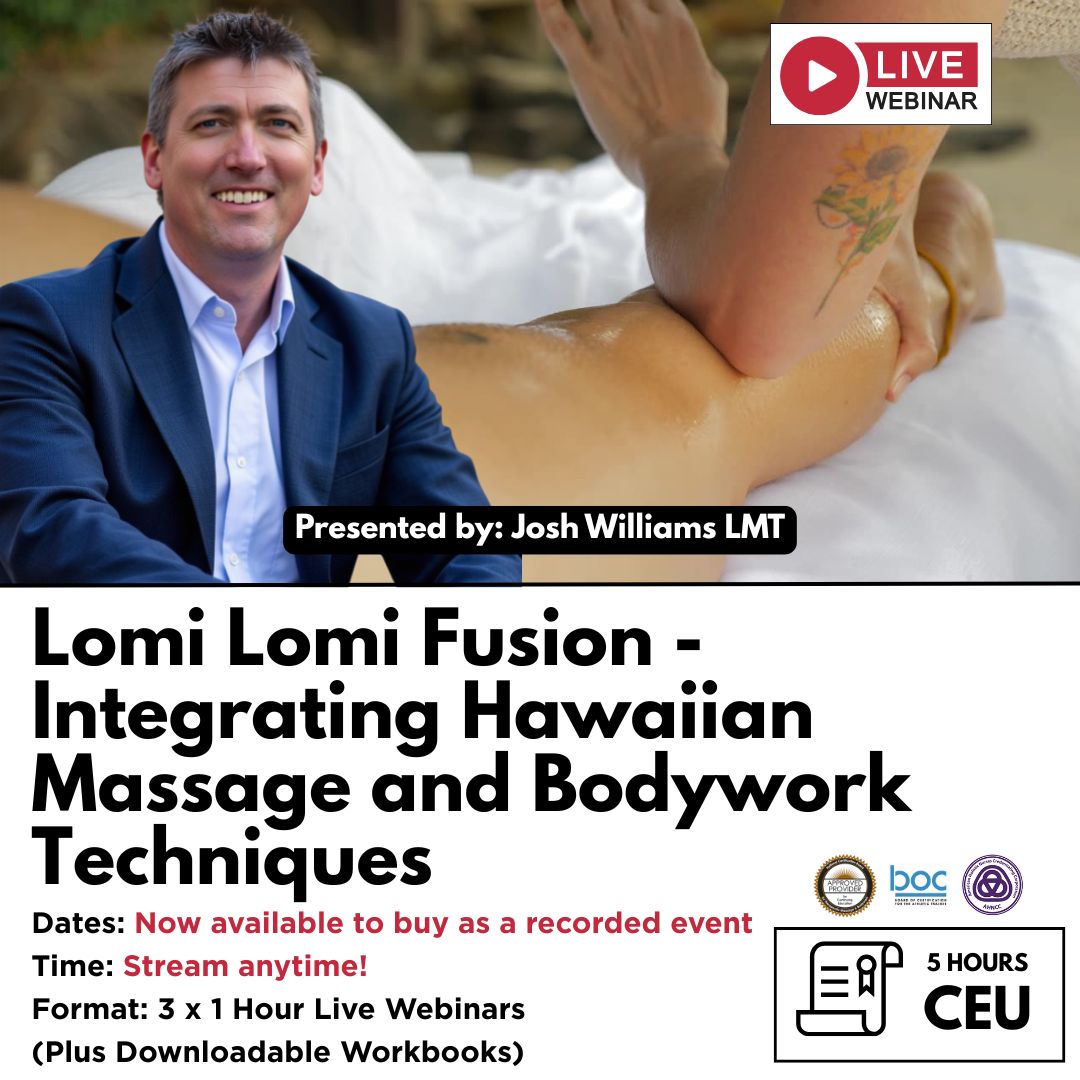Wrist Sprains - How To Find Trigger Points
Trigger Point Overview - Wrist Extensors
Trigger points in the wrist extensor muscles are incredibly common and are often related to repetitive strain injuries, primarily associated with gripping.
In some cases, these trigger points (left untreated) may be the cause of more complex injuries.
An example of this is a situation that we often see with long-distance drivers.
In these cases, the trigger points evolve over time as a result of repetitive use of the hands to squeeze and operate the steering wheel and gears.
The trigger points cause the muscles in the wrist extensors to become shorter and less efficient. Left untreated (as they usually are), this leads to more complex issues as other muscles are engaged to meet the deficiency.
In other situations, these trigger points may develop as a reaction to a more complex injury such as carpal tunnel syndrome, or a trauma (accident, fall).
In these cases, the trigger points are thought to manifest as part of the body's natural protect and defend mechanism.
The danger in these situations is that these trigger points are often overlooked, whilst the main injury is addressed.
Indications
Forearm/elbow/wrist/hand pain, finger stiffness, painful/weak grip, tennis elbow, pain on gripping and twisting.
Common Causes
Computer mouse/keyboard, prolonged repetitive gripping (e.g. writing, ironing, using tools, throwing, massaging), wrist fractures or falls (extensor carpi ulnaris), casts, racket sports, skiing, playing musical instruments (piano, violin, drum).

Extensor Carpi Radialis Longus - Common Trigger Point Sites

Extensor Carpi Ulnaris - Common Trigger Point Sites

Wrist sprains involve injury to the ligaments of the wrist. Such sprains are a common occurrence when the hand is extended to break a fall. Ligaments are necessary for stabilization of the hand and control of motion.
Wrist sprains vary from moderate to severe, with the latter involving complete tearing of the ligaments and instability of the associated joint.
The injury is common in athletes engaged in football, basketball, skiing, snowboarding, rollerblading and a variety of other sports in which the hands are vulnerable.
The eight carpal bones of the wrist are connected via complex ligaments – fibrous bands of connective tissue.
Cause of injury
Engaging in sports where falls are common: e.g. in-line skating, snowboarding, cycling, soccer, football, baseball and volleyball. Lack of protective equipment, including wrist guards. Muscle weakness or atrophy.
Signs and Symptoms
Pain with movement of the wrist. Burning or tingling feeling at the wrist. Bruising or discoloration of the skin.
Complications if Left Unattended
Moderate to severe wrist sprains left untreated can lead to ongoing deficit of movement and strength in the wrist as well as developing arthritis at the region of the injury.
Immediate Treatment
RICER regimen immediately following injury. Immobilization of injured wrist to restrict movement.
Rehabilitation and Prevention
Flexibility and range of motion exercises may be encouraged by a physical therapist, following initial recovery of the ligament.
Should the ligament be torn completely, or if fracture accompanies the sprain, surgery may be required. Use of protective guards for wrists and concentration on balance during sport may help to avoid this injury.
Long-Term Prognosis
Most wrist sprains undergo full recovery given proper initial care and necessary healing time.
This trigger point therapy blog is intended to be used for information purposes only and is not intended to be used for medical diagnosis or treatment or to substitute for a medical diagnosis and/or treatment rendered or prescribed by a physician or competent healthcare professional. This information is designed as educational material, but should not be taken as a recommendation for treatment of any particular person or patient. Always consult your physician if you think you need treatment or if you feel unwell.

Continuing Professional Education
Looking for Massage Therapy CEUs, PT and ATC continuing education, chiropractic CE, or advanced manual therapy training? Explore our evidence-based online courses designed for hands-on professionals.


















